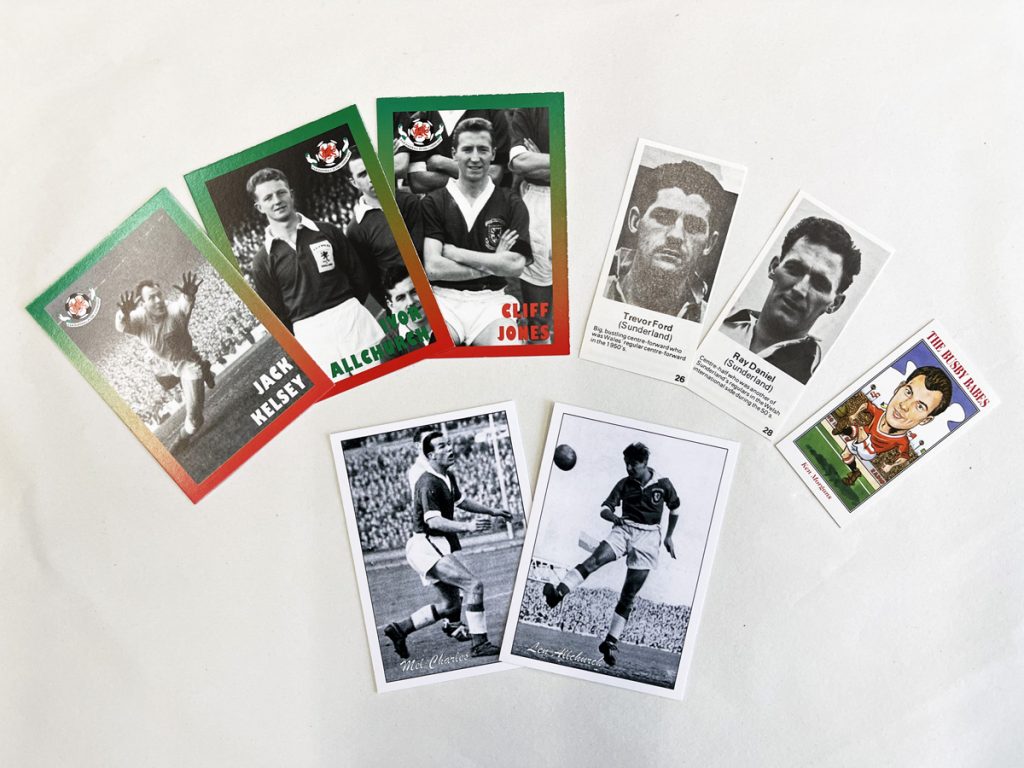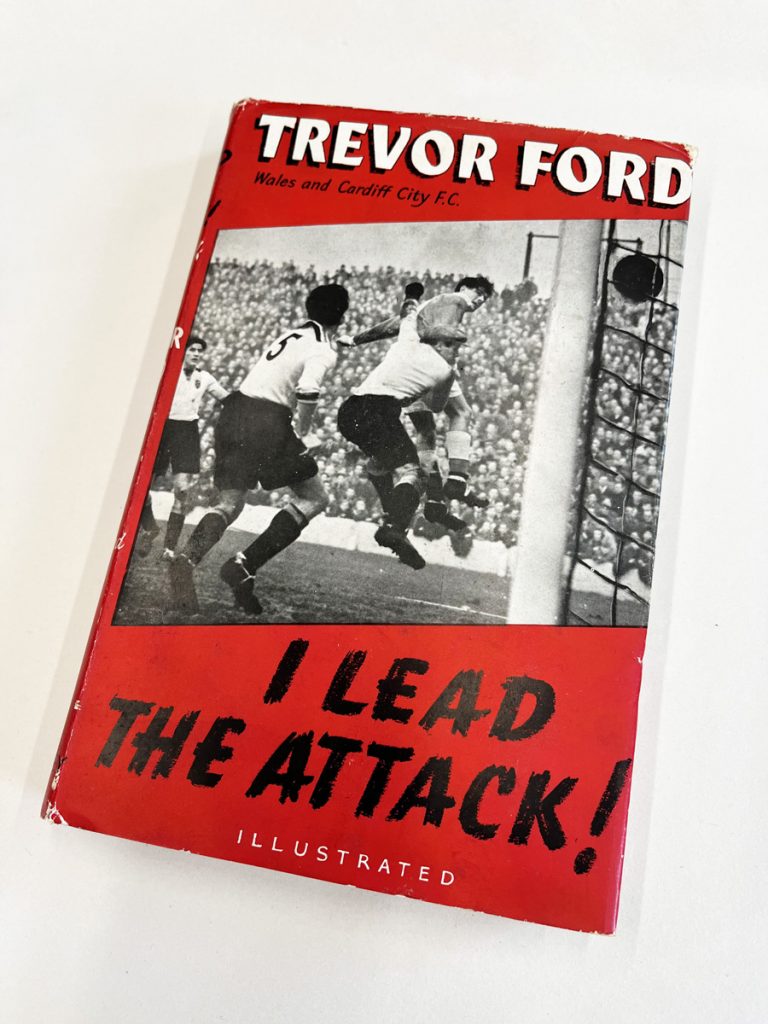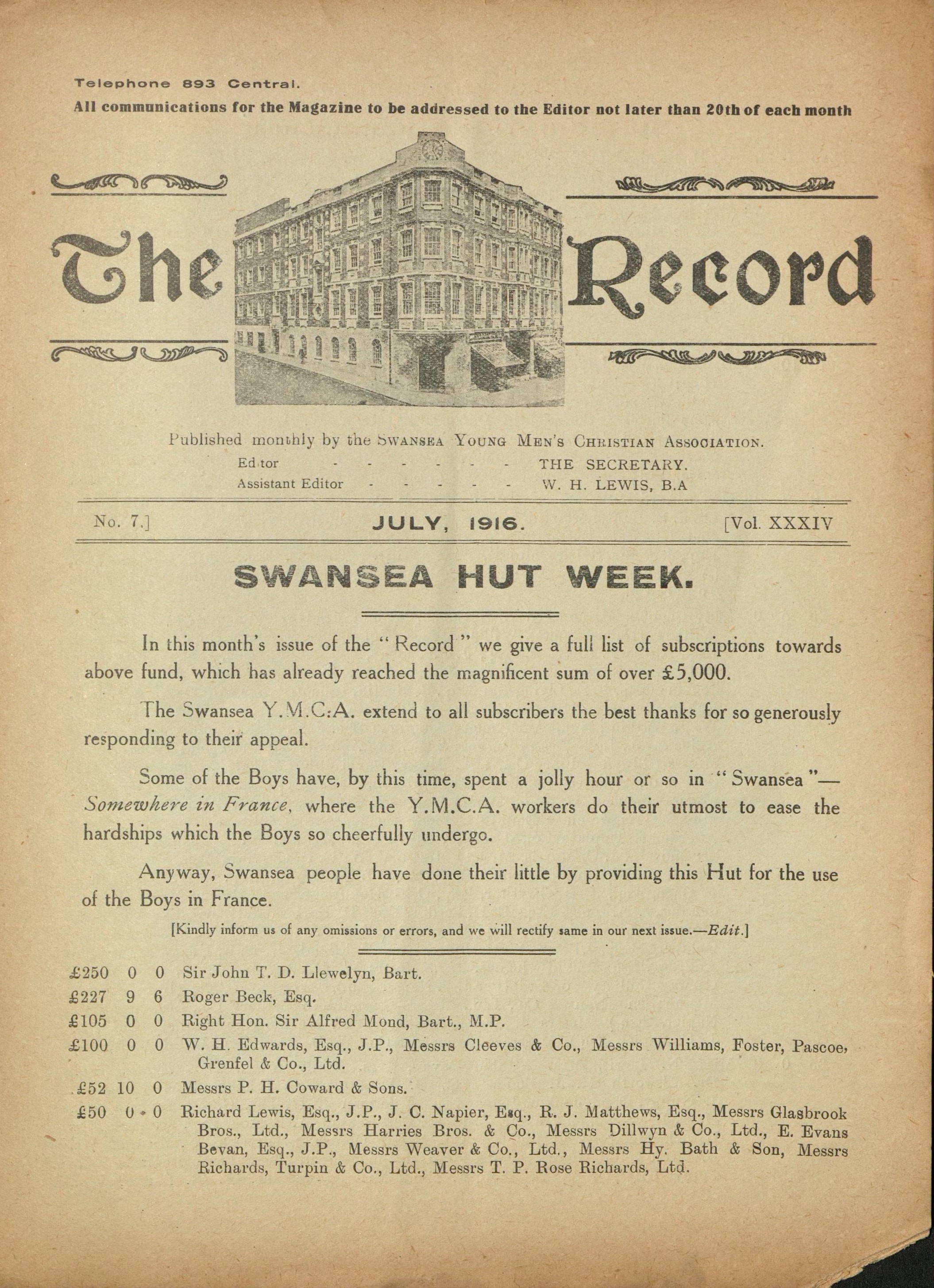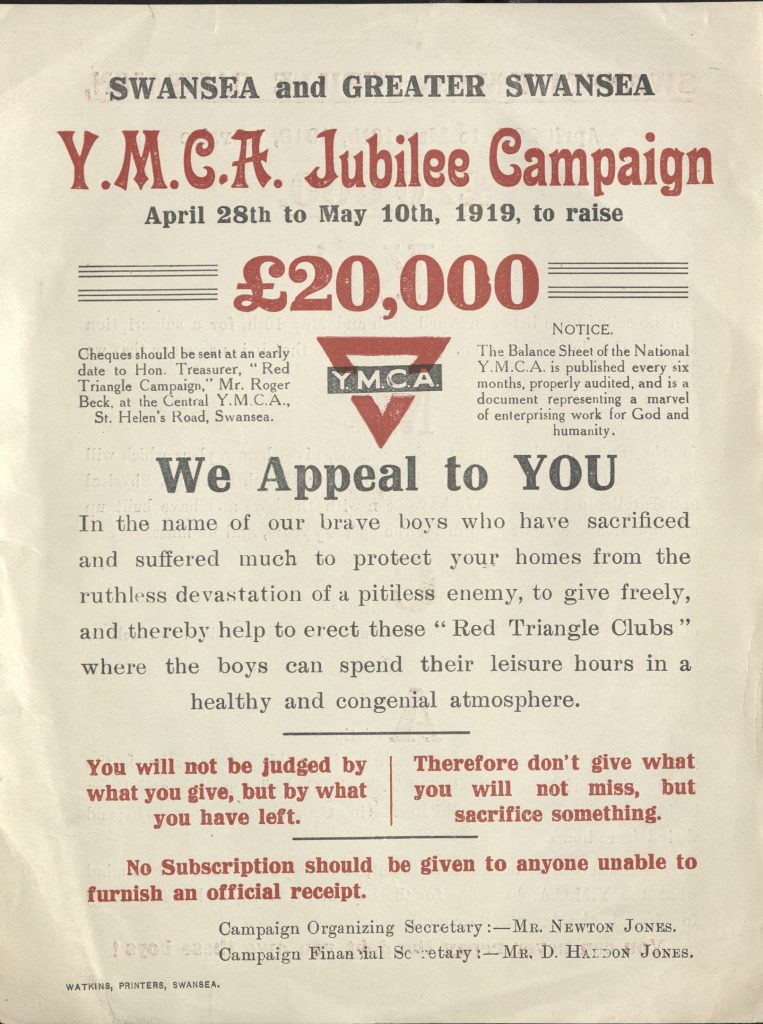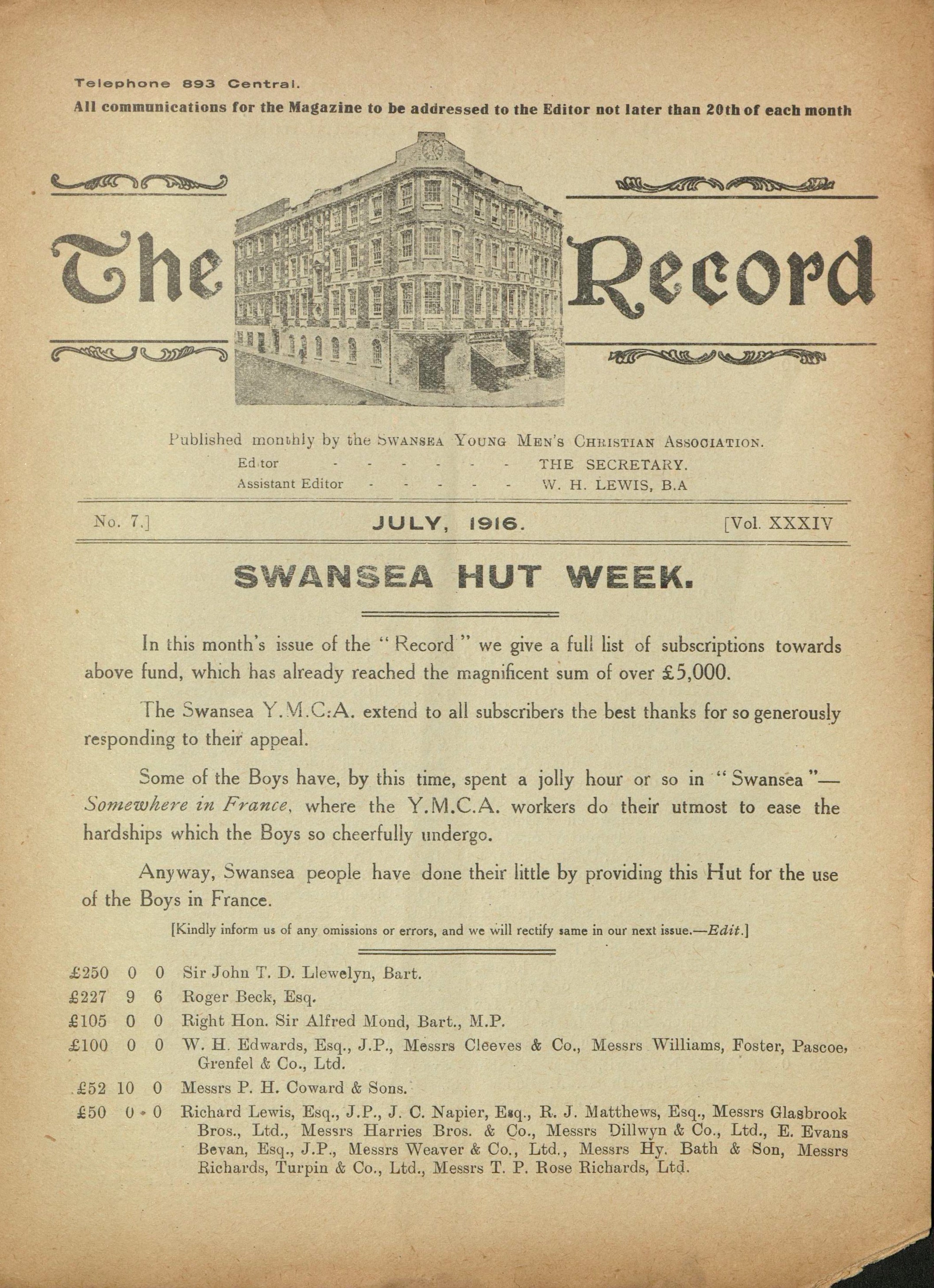
Crys T – wedi’i gynhyrchu gan grŵp GoodVibes y YMCA, Abertawe
Dyluniwyd y crys T gan bobl ifanc yn y grŵp GoodVibes ar gyfer gorymdaith Pride Abertawe 2021.
Ar 2 Hydref 1857, cyhoeddodd papur newydd y Cambrian y byddai ‘cyfarfod cyntaf Cymdeithas Dynion Ifanc Eglwys Lloegr yn cael ei gynnal ar 6 Hydref am 6pm yn yr Ysgol Genedlaethol, Stryd Rhydychen’ (sef y maes parcio gyferbyn â Theatr y Grand erbyn hyn), ‘lle byddai Pascoe St Ledger Grenville yn rhoi araith.’
Yr wythnos ganlynol, ar 9 Hydref cyhoeddodd y Cambrian adroddiad am y cyfarfod.
Cadeiriwyd y cyfarfod gan y Parch E B Squire (Ficer y Santes Fair o 1846 i 1876). Meddai Pascoe St Ledger yn ei araith,
“Rhaid i Gymdeithasau fod yn ffordd o ddod â dynion ifanc at ei gilydd, ac yn ffordd o roi mwynhad a chyfleoedd iddynt na allant eu cael gartref – cyfleoedd i ddefnyddio’u doniau a’u galluogi i ffurfio cymdeithasau a chyfeillgarwch a all fod yn werthfawr ac yn bwysig iddynt hyd diwedd eu hoes. Yn y fath achosion, roedd cymdeithas yn fuddiol iawn – mae rhai o gymdeithasau mwyaf nodedig y cyfnod wedi datblygu o gymdeithasau o’r math hwn.”
Nid oes llawer o wybodaeth am y grŵp gwreiddiol a’i weithgareddau. Fodd bynnag, roedd adroddiad ym mhapur newydd y Cambrian ar 4 Ionawr 1861 yn cyhoeddi bod y grŵp yn cael ‘soirée’ yn yr Ystafelloedd Cynnull ar 9 Ionawr, lle,
“Byddai sawl dyn yn ymddangos yn gyhoeddus am y tro cyntaf”.
Yr unig ddigwyddiad modern cyfwerth heddiw yw’r dawnsiau debutante lle mae’r aristocratiaid yn cyflwyno’u merched i’r brenin. Fodd bynnag, yn ystod y cyfnod hwn, byddai digwyddiadau o’r math hwn yn cael eu cynnal yn aml, ac mae sôn am ddynion a menywod yn cael eu cyflwyno i gymdeithas. Mae’r term modern ‘dod allan’ yn tarddu o’r digwyddiadau hyn.

Sefydlwyd YMCA Abertawe ym 1868 pan newidiodd y grŵp uchod ei enw i ddilyn fformat arferol YMCA.
Ychydig dros gant a hanner o flynyddoedd yn ddiweddarach, yn 2011, sefydlwyd cymdeithas arall, sef GoodVibes, dan nawdd YMCA Abertawe.
Grŵp ieuenctid LHDTC+ cynhwysol yw GoodVibes sy’n cefnogi pobl ifanc rhwng 11 a 25 oed. Mae’n darparu lle diogel sy’n lleihau teimladau o unigrwydd a theimlo’n ynysig. Gall pobl ifanc feithrin perthnasoedd gyda chyfoedion o fewn cymuned, fel y gallant berthyn, cyfrannu a ffynnu. Mae’n grŵp lle gall pobl ifanc fod yng nghwmni unigolion o’r un meddwl, mewn amgylchedd sy’n hyrwyddo parchu dewisiadau, dinasyddiaeth a hunaniaeth ddiwylliannol eraill. Mae’n rhoi’r hyder i bobl ifanc archwilio’u hunaniaeth eu hunain yng nghwmni pobl sy’n deall ac yn eu cefnogi.
Mae GoodVibes yn gweithredu ar sylfaen gwerthoedd cryf o gynwysoldeb ac amrywiaeth. Gall pobl ifanc ddod i GoodVibes heb boeni am gael eu beirniadu, eu haflonyddu, eu bwlio na bod yn destun gwahaniaethu a rhagdybiaethau cymdeithasol. Gallant fod y person maent eisiau bod, mewn lle diogel lle gallant archwilio’u hunaniaeth. Mae’n grŵp lle gall pobl ifanc ddod a chyflwyno eu hunain, eu henwau, eu henwau dewisol, eu rhagenwau a’u hoff bethau. A’r hyn maent yn ei gael yn gyfnewid am hynny, gan ei gilydd a gweithwyr ieuenctid, yw cael eu derbyn, yn ddi-gwestiwn.
Mae Amgueddfa Abertawe wedi cynnwys y crys T yn ei chasgliad fel rhan o’i pholisi i amrywio’r arddangosfeydd.

